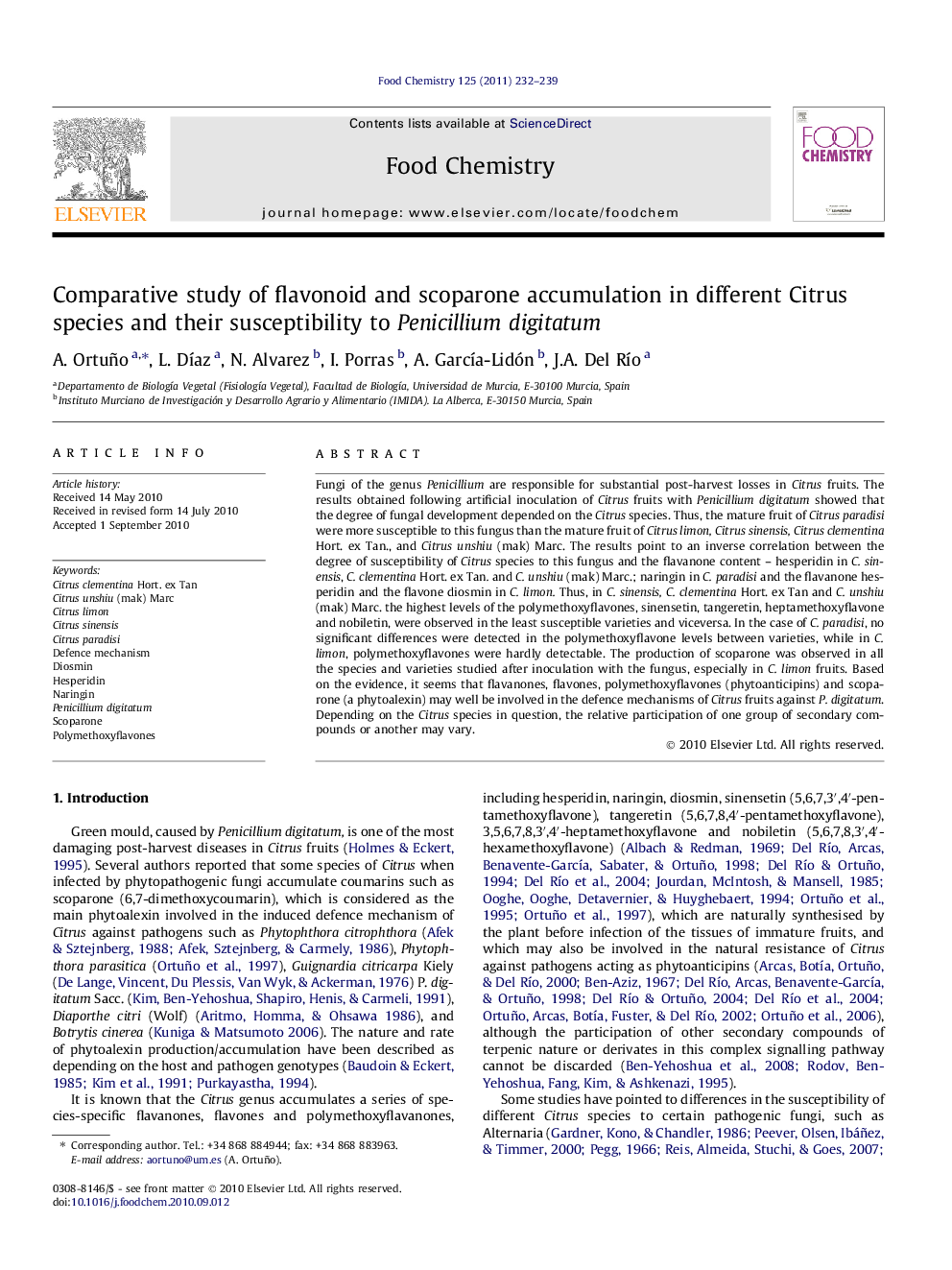| Article ID | Journal | Published Year | Pages | File Type |
|---|---|---|---|---|
| 1189690 | Food Chemistry | 2011 | 8 Pages |
Fungi of the genus Penicillium are responsible for substantial post-harvest losses in Citrus fruits. The results obtained following artificial inoculation of Citrus fruits with Penicillium digitatum showed that the degree of fungal development depended on the Citrus species. Thus, the mature fruit of Citrus paradisi were more susceptible to this fungus than the mature fruit of Citrus limon, Citrus sinensis,Citrus clementina Hort. ex Tan., and Citrus unshiu (mak) Marc. The results point to an inverse correlation between the degree of susceptibility of Citrus species to this fungus and the flavanone content – hesperidin in C. sinensis, C. clementina Hort. ex Tan. and C. unshiu (mak) Marc.; naringin in C. paradisi and the flavanone hesperidin and the flavone diosmin in C. limon. Thus, in C. sinensis,C. clementina Hort. ex Tan and C. unshiu (mak) Marc. the highest levels of the polymethoxyflavones, sinensetin, tangeretin, heptamethoxyflavone and nobiletin, were observed in the least susceptible varieties and viceversa. In the case of C. paradisi, no significant differences were detected in the polymethoxyflavone levels between varieties, while in C. limon, polymethoxyflavones were hardly detectable. The production of scoparone was observed in all the species and varieties studied after inoculation with the fungus, especially in C. limon fruits. Based on the evidence, it seems that flavanones, flavones, polymethoxyflavones (phytoanticipins) and scoparone (a phytoalexin) may well be involved in the defence mechanisms of Citrus fruits against P. digitatum. Depending on the Citrus species in question, the relative participation of one group of secondary compounds or another may vary.
